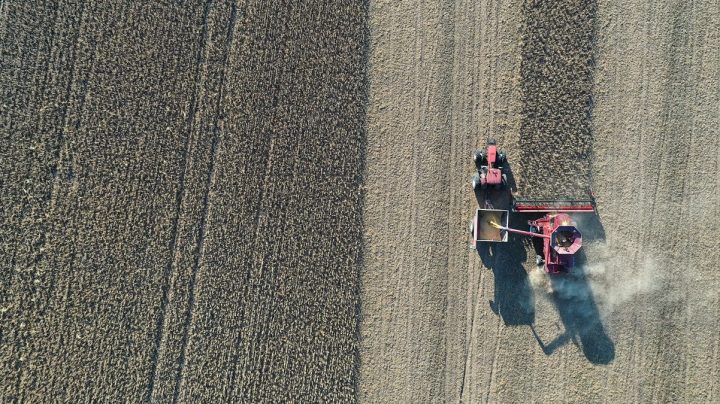
How does the price of soybeans, corn and other commodities affect the cost of food?
How does the price of soybeans, corn and other commodities affect the cost of food?

This time last year, prices for agricultural commodities — think wheat, corn, soybeans and oil seeds — were sky-high, due primarily to Russia’s war in Ukraine taking a lot of productive farmland out of the equation.
Since then, supplies of many of those commodities have recovered, and prices have eased. Prices received by U.S. farmers are down 2.2% over last year, according to the Department of Agriculture’s commodity price index.
So if the raw ingredients that go into the food we buy are getting cheaper, how come prices at the grocery store are so stubbornly high and climbing?
To explain this, let’s look at soybeans. Last June, prices surged to a record $17.69 a bushel. Since then, farming has been getting back on track in Eastern Europe. And Brazil saw a bumper soybean crop.
“Which is bringing prices down to the lowest level we’ve had in a few years,” to about $13 a bushel, said Scott Gerlt with the American Soybean Association. “It’s been a very, very significant swing.”
A significant swing for growers of soybeans and all the raw ingredients that go into our food. So our grocery bills should be shrinking too, right?
“It may be a slightly disappointing answer for listeners,” said Dean Rosenblum, an analyst at Bernstein.
Consumers usually only feel upward swings in commodity prices, he said. The cycle goes like this: “When the supply side costs spike, prices on shelf in the grocery store also spike.”
But retailers don’t usually pass on the full cost of wholesale food inflation. So when commodity prices start coming down, “the grocery pricing tends to stick, if you will,” Rosenblum said.
Besides, ingredient costs are just part of the pricing equation, said David Ortega, a food economist at Michigan State.
“Out of every dollar that we spend on food, approximately 15 cents can be tied back to the farm,” he said.
Everything that happens to crops after they leave the farm gates — “the processing, the packaging, the transportation,” Ortega said — is still much more expensive than it was a few years ago.
So falling commodity prices alone won’t bring down stubbornly high food costs, he added. But they might help slow the pace of inflation.
There’s a lot happening in the world. Through it all, Marketplace is here for you.
You rely on Marketplace to break down the world’s events and tell you how it affects you in a fact-based, approachable way. We rely on your financial support to keep making that possible.
Your donation today powers the independent journalism that you rely on. For just $5/month, you can help sustain Marketplace so we can keep reporting on the things that matter to you.











